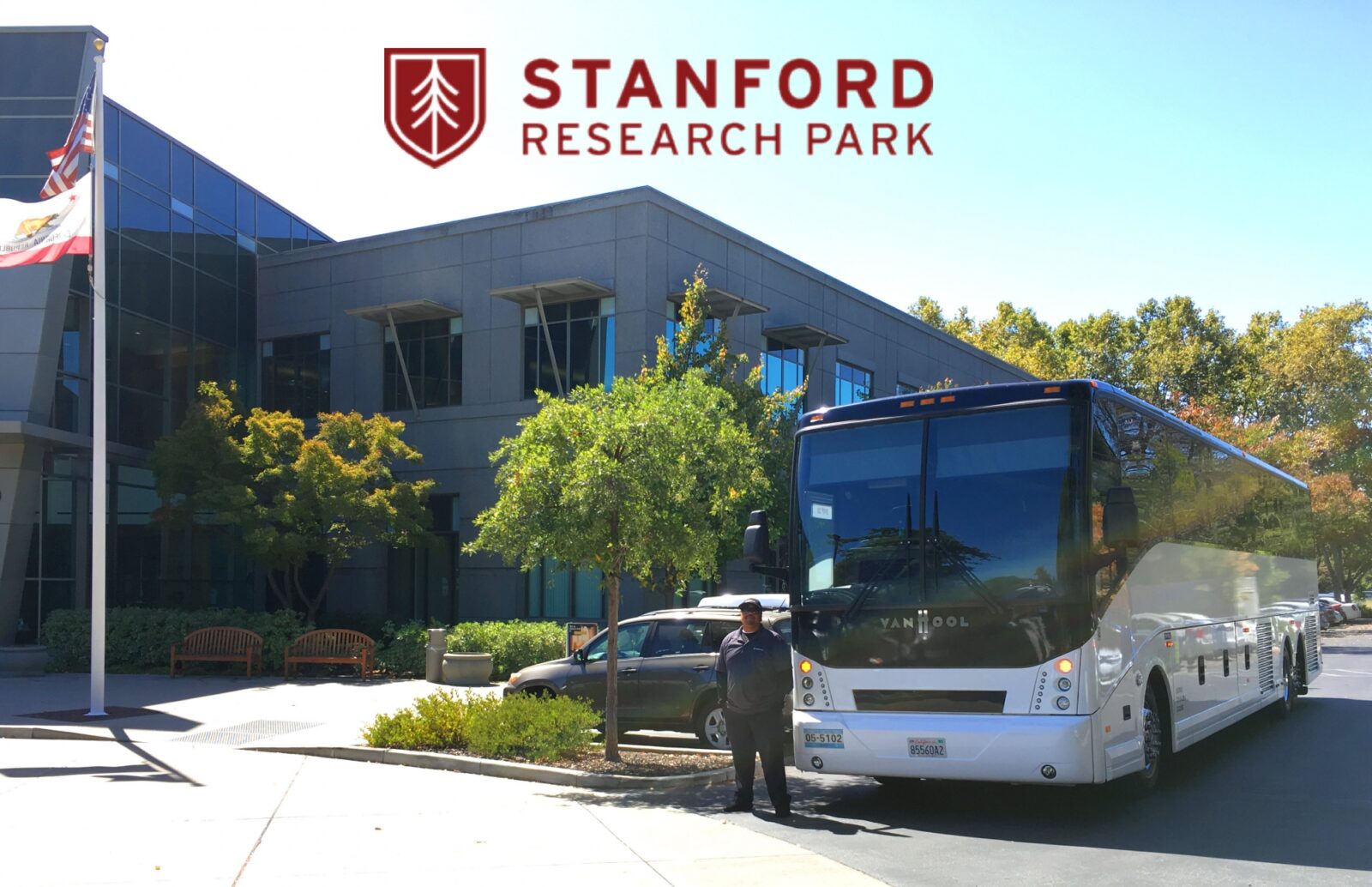Established in 1951 as a joint initiative between Stanford University and the City of Palo Alto, Stanford Research Park (SRP) is an innovation centre for world leaders in technology and life sciences. Designated one of the nation’s Best Workplaces for Commuters, the 700-acre business park’s “SRPGO” transportation program serves 150 companies in 10 million square feet and 140 buildings[1].

CHALLENGES
- Reduce single occupancy vehicle (SOV) trips, emissions and traffic congestion for campus in the heart of Silicon Valley – home to companies such as Nest, VMware, Jazz Pharmaceuticals, Varian and Merck.
- Improve access to public transit and Stanford University located two miles from SRP.
SOLUTION
SRP teamed with WeDriveU as a strategic transportation partner for its shuttle program in 2016. WeDriveU orchestrates shuttle strategy, analytics and operations as part of its University Shuttle Services offering. When the program rolled out, Jamie remarked,
“The Stanford Research Park commuter bus operated by WeDriveU provides an attractive alternative to solo driving from San Francisco. Stanford is pleased to partner with our tenant companies to offer effective and efficient commuter service.”
In a presentation at the 2018 Association for Commuter Transportation (ACT) international conference, SRP’s Senior Sustainable Transportation Specialist Amy McCrary described how the small transportation department has scaled to serve 29,000 commuters by facilitating partnerships and offering benefits for companies of all sizes. Key programs include:
- Free WeDriveU last mile shuttles for Caltrain stations powered by WeDriveU
- Subsidized WeDriveU wifi commuter buses serving SF + San Jose
- Complementary benefits: SmartPass program for free bus and rail, subsidized flexible carpooling app, subsidized vanpools and monthly bike days
SRP’s other services include carsharing, bicycling, trip planning, marketing outreach and commuter engagement programs.
On a webinar[2] hosted by Best Workplaces for Commuters, SRP’s Sustinable Transportation Director, Jamie Jarvis, described the important role technology plays in expanding SRPGO in areas such as:
- Mobile trip planning and shuttle tracking in partnership with WeDriveU and Tripshot
- Real-time transit information and digital wayfinding from Transitscreen
- Scoop’s carpool app for matching, reservations, incentives and payments
RESULTS
SRPGO is a compelling example of a multi-modal shared transportation system with real-time information on a large campus.
Technology and strong partners play an important role in evolving SRPGO’s groundbreaking model for shared private shuttles. In a conversation with Julie Bond from Best Workplaces for Commuters, Jamie highlighted SRP’s partnership with WeDriveU and Tripshot.
“We operate two shared bus routes from San Francisco and from San Jose. These are private buses, but, when I say shared, we have funding partnerships with some of our larger companies and then anyone in the research park can ride these buses.”
Jamie added, “I have to give a lot of kudos to both Tripshot and WeDriveU…we ended up with a product that works really well.”
She mentioned SRP’s unique fare structures, with some companies paying full or partial fares, and some riders paying a standard fare. With riders from different companies, she said, “It’s not just enough to have them show their badge at the door to get on. We actually have through Tripshot a boarding pass that they display each time they get on. It’s been a really great tool for us. We also use Tripshot for real time information on our free Caltrain and lunchtime shuttles. There’s no payment need there but it’s still really useful to have the real time info.”
WeDriveU is proud to help Stanford Research Park achieve transportation goals which are central to the mission on its website: “Stanford Research Park is a community of and for people who seek to invent the future. We support innovative companies in their R&D pursuits by providing modern facilities in a beautiful natural landscape, offering sustainable transportation programs, forging connections with Stanford University’s talent and resources, and fostering collaboration.”
